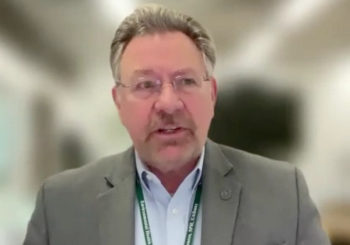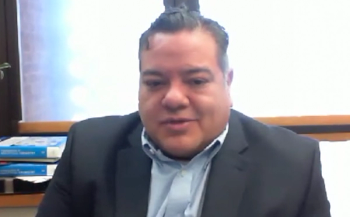
Inside the Laboratory: The Shelley Group at Rensselaer Polytechnic Institute
At the Winter Conference on Plasma Spectrochemistry, Jacob Shelley of Rensselaer Polytechnic Institute sat down with Spectroscopy to talk about the latest work he and his group are conducting.
Inside the Laboratory is a joint series with LCGC and Spectroscopy, profiling analytical scientists and their research groups at universities all over the world. This series will spotlight the current chromatographic and spectroscopic research their group is conducting, and the importance of their research in analytical chemistry and specific industries. In this edition of “Inside the Laboratory,” Jacob Shelley, PhD, an Alan Paul Schulz Career Development Professor of Chemistry at Rensselaer Polytechnic Institute in Troy, New York, discusses his group’s most recent work using a new technique that utilizes acoustic waves to move gas-phase ions.
The Shelley Group is part of the Department of Chemistry and Chemical Biology at Rensselaer Polytechnic Institute, in Troy, New York. The Shelley Group is currently working on expanding the capabilities of ambient mass spectrometry (MS) through added dimensionality of analysis without compromising the speed of the analysis. The group’s objective is to develop an ionization source that can operate at atmospheric pressure and provide molecular, structural, and atomic information of species present on a sample surface, and to accomplish this, they are beginning to experiment with adding other optical methods to MS, such as laser-induced breakdown spectroscopy (LIBS) and Raman spectroscopy.
Jacob Shelley earned his BS in Chemistry from Northern Arizona University in Flagstaff, Arizona, in 2005. During his undergraduate career, he was a summer intern at Los Alamos National Laboratory and worked on several projects including metallomics with X-ray fluorescence (XRF) detection, developing nanoporous silica substrates for matrix-free MALDI, and method development for detecting a wide range of radioactive materials.He completed his PhD at Indiana University under Prof. Gary Hieftje in 2011, where his research focus was on the development, characterization, and application of novel plasma ionization sources for molecular MS.Jacob started his postdoctoral research with Prof. R. Graham Cooks at Purdue University 2011 where he developed portable MS instruments capable of in situ analyses. In 2014, Jacob started his independent academic career as an Assistant Professor at Kent State University before becoming the Alan Paul Schulz Career Development Professor of Chemistry at Rensselaer Polytechnic Institute in Troy, New York in 2016. Prof. Shelley has authored 48 published journal articles, five United States patents/patent applications, a book chapter, and has given more than 65 invited presentations at national and international venues.
Spectroscopy sat down with Shelley at the Winter Conference on Plasma Spectrochemistry to talk about his group’s recent work. In the below video interview, Prof. Shelley answers the following:
- Can you talk about the analytical techniques that your group used in your most recent research project?
- Can you explain the importance of your research within the broader field of analytical chemistry or in a specific industry/application?
- How do you stay updated with advancements in analytical chemistry techniques and technologies? Can you discuss a recent innovation or development that you find particularly impactful or exciting?
Newsletter
Get essential updates on the latest spectroscopy technologies, regulatory standards, and best practices—subscribe today to Spectroscopy.



